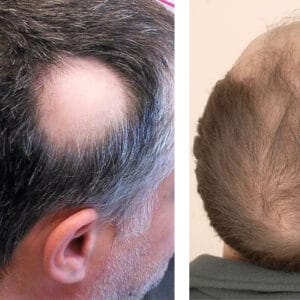Sitting has become the new culture in the contemporary world that is fast and technologically advanced. Be it in front of a computer, in a car commuting to work or in front of your favorite Netflix show, most Americans are sitting all day long. However, what is the effect of this on your health, particularly in the short-term?
Although the majority of the population is aware that a sedentary lifestyle may result in obesity, heart disease, and diabetes, it may not come as a surprise to them to find that the short-term effects of a sedentary lifestyle may manifest themselves much sooner than expected. Your body and mind can start to reflect some adverse results even after only a few days or a few weeks of low physical activity.
We shall see what becomes of your body when you live a sedentary lifestyle, why it happens and what you can do to reverse it before it begins to adversely affect your health.
Understanding the Sedentary Lifestyle
It would be good to identify the meaning of the term sedentary before immersing oneself in the short-term effects.
What Does “Sedentary” Mean?
Sedentary lifestyle is a lifestyle which entails minimal physical activities. It also involves a lot of time sitting, reclining or lying down, usually when performing screen-based tasks, like playing with a computer, scrolling through the phone, or television watching.
According to the U.S. Department of Health and Human Services, adults should have a minimum of 150 minutes of moderate-intensity exercises per week. Regrettably, studies indicate that almost 1 out of every 4 American adults does not even have that minimum qualification.
Common Sedentary Activities in American Life
The most typical forms of sedentary behaviors are:
- Working a desk job 8+ hours a day.
- Travelling over long distances with a vehicle or bus.
- Spending a lot of time in front of the television or watching movies on the internet.
- Recreational use of smartphones, tablets, or computers.
- Several hours playing video games.
Even such activities that may appear to be non-problematic, such as reading or working remotely, can turn out to be problematic when they substitute most of the day movement.
The Immediate Impact of a Sedentary Lifestyle
You do not need to take years to experience the impacts of lack of activity. Actually, some short-term effects may manifest themselves in a matter of few days or weeks of restriction of movement. The effects of these consequences are both physiological and psychological, usually in minor yet significant forms.
Let’s look at some of the most common short-term outcomes of a sedentary lifestyle.
Reduced Energy Levels and Fatigue
How Sitting Too Much Drains Your Energy
It may even make sense that sitting throughout the day would save energy since you are not moving too much anyway. However, the opposite is true. Sedentary lifestyle literally makes your body less efficient in the production and utilization of energy, which causes you to feel tired and lethargic.
You use less oxygen in your muscles and your metabolism decreases when you move less. It makes your circulation slow down, i.e. your body fails to supply nutrients and oxygen to the body with effectiveness. This may cause you to be exhausted and tired even when you have slept a whole night.
Why You Might Feel “Too Tired” to Exercise
The fatigue in this situation tends to be a vicious cycle:
- You sit all day and feel tired.
- You do not exercise due to exhaustion.
- Coming without exercising also decreases your energy.
The pattern will render even minor movements tiresome within a week or two.
Increased Muscle Stiffness and Joint Pain
The Problem with Staying Still
Spending hours sitting in one place (particularly sitting) may cause the muscles and joints to stiffen and ache. You are made to move. In its absence, the blood flow will be less and the muscles that hold your spine and the joints weaken.
Common Pain Points for Sedentary Individuals
Neck and shoulders: Sitting by leaning forward on the screen stretches the neck muscles.
Lower back: Sitting straightens your spine and makes it less flexible.
Hips: Long sitting makes the hip flexors shorter resulting in tightness and discomfort.
Legs: Stasis decreases the speed of blood circulation in the lower extremities, which exposes one to swelling or cramping.
Your body will become stiff, creaky and uncomfortable even after a couple of days of excessive sitting.
Short-Term Weight Gain and Slower Metabolism
Why Your Metabolism Slows When You Sit
In the state of inactivity, your muscles need less glucose (sugar) to generate energy. This causes the insulin sensitivity in your body to be reduced, that is, your cells become inefficient in utilizing sugar. This causes a little increase in blood sugar and insulin levels- even when one has a few days of inactivity.
Your metabolism also becomes slow since your body does not burn many calories. Although you might not change your diet, you can begin to gain weight around your abdomen and this is one of the first short lasting effects of sedentary living.
The “Desk Job” Weight Gain Phenomenon
Americans are sensitive to even minor changes, which occur in a matter of weeks after taking a sedentary job: the tightness of clothes, the lack of energy in the mid-afternoon. It is not merely aging but the body is getting accustomed to less calories burnt every day.
And even standing or walking a few minutes an hour would help to reverse this effect.
Poor Posture and Back Discomfort
The Posture Problem
One of the most obvious effects of excessive sitting is poor posture. Bent posture, hunching over a computer or even crossing your legs during hours may all get your spine out of shape.
In the long run, this causes back pain, rounded shoulders and tension headaches. These symptoms can affect many individuals in a few days of added sedentary lifestyle – particularly individuals who can work at home not having ergonomic setups.
Quick Fixes for Better Posture
- Hold your monitor at eye level.
- Sit with both feet on the floor.
- Sit on a chair that is supportive to your back.
- Sit up or stand after every 30-60 minutes.
Even minor pauses will alleviate stress and assist in good spinal positioning.
Decreased Mental Clarity and Mood Changes
The Mind-Body Connection
Exercise is not only a problem that impacts the body, but also the brain. Research has indicated that the lack of exercise may result in decreased brain blood circulation, which leads to slow thinking and inability to focus.
Individuals with extended sitting durations complain of being cloudy, annoyed, or uninspired. The reason is that movement arouses endorphins and circulates more oxygen to the brain to lift one’s mood and enhance alertness.
Sedentary Lifestyle and Stress
Sedentary behavior can also enhance stress and anxiety. The absence of a frequent movement to relieve tension and increase serotonin leads to the accumulation of stress hormones such as cortisol. This may cause anxiety, sleeping difficulties and mood swings after a few weeks.
Short-Term Digestive Problems
Why Sitting Affects Digestion
You have a slow digestion when you sit long especially after meals. Gravity aids in the passage of food along the bowels, and when you sit too long, it may be disturbed.
This may cause constipation, bloating as well as heartburn particularly after a big meal. These problems are observed by many people within a few days of sitting more than normal – during long working days or during traveling.
Quick Tips for Better Digestion
- Take a short walk after meals.
- Consume a great deal of water during the day.
- Do not sleep immediately after meals.
Even the light exercise can promote the digestion and relieve the pain.
Temporary Increases in Blood Pressure and Blood Sugar
How Quickly It Happens
The idea that you may have is that it is only after many years of inactivity that the changes in blood pressure or blood sugar take place. Amazingly, studies indicate that even a few days of sedentary lifestyle may cause changes that may be small but significant.
This occurs due to the fact that the muscles which are not exercised on a regular basis are no longer efficient in their ability to absorb glucose and to transport blood. The result? Temporary increases in blood sugar and blood pressure, which are both initial indications of metabolic illnesses.
The Takeaway
Seven or even brief periods of sitting can have an effect on heart health. That is why specialists suggest to change position every 30 minutes even though it may be standing up or stretching.
Sleep Disturbances
How Inactivity Disrupts Sleep
Ironically, when one sits all day, it becomes difficult to sleep at night. The natural fatigue required to get a deep sleep can be lost without sufficient movement. Moreover, excessive screen time (another typical feature of sedentary lifestyle) may disrupt your body in making melatonin, which is a hormone that controls sleep.
In several days, you may experience an inability to fall asleep, sleeplessness, or drowsiness in the morning.
Restoring Healthy Sleep Patterns
Attempt to add some simple exercise, such as walking or yoga, to your day. Working out will allow you to control your circadian rhythm, eliminate stress, and sleep better.
Decreased Motivation and Productivity
The Productivity Paradox
Most individuals would think that the more time we sit, the more we get done, however, this is not the case since long sitting may actually lead to reduced work output. Lack of exercise may lead to decreased energy and attention and it becomes more difficult to remain productive.
This can be attributed to the fact that movement enhances blood flow to the brain which makes one more alert and creative. A five-minute stroll is also enough to re-energize you and to clear mental fog.
The Workplace Impact
This loss of concentration in office situations may result in decreased performance, errors and stress. This is the reason why a lot of American businesses are currently implementing standing chairs, walking conferences, and active recesses to ensure that workers are not bored and feel healthy.
Short-Term Emotional Effects: Stress, Anxiety, and Low Mood
Why Inactivity Impacts Mental Health
One of the best stress relievers of the body is physical movement. The endorphins are the feel-good hormones, which are produced during exercise and fight stress and anxiety. In their absence, one can easily get stressed or depressed.
Sedentary people would experience a significant drop in mood in a few days of less activity. This may cause irritation, social withdrawal and restlessness.
Quick Mood Boosters
- Go for a 10-minute walk outside.
- Practice or stretch deep breathing.
- Unless you listen to music and move your body.
Even short activity breaks can get your spirits almost at a lift.
How to Reverse Short-Term Effects of a Sedentary Lifestyle
The good thing is that the short-term effects can be reversed. Even when you have not been exercising, your body reacts fast to any positive changes.
Simple Ways to Add Movement to Your Day
Have regular breaks: Stand up or walk after every 30 minutes.
Take a standing desk: Sit and stand at work.
Walk on calls: Turn phone time into movement time.
Include mini-workouts: 5-10 minutes of stretching, squats or walking several times a day.
Active leisure: After dinner, do not sit in front of the TV, but go out or do some light yoga.
Tracking Your Progress
You can use a fitness tracker or a smartphone application to track the number of steps you are taking each day and to remind you to do it. Goal of at least 7,000-10,000 steps per day – this is achievable by most Americans.
Why Short-Term Consequences Matter
Short-term pain is easy to ignore, a bit of stiffness here, some tiredness there, is nothing much. However, these little red flags may lead to even greater problems in the future. Without considering the short-term consequences, it is possible to prepare the ground to long-term health risks.
Including:
- Chronic weight gain
- Type 2 diabetes
- Cardiovascular disease
- Depression and anxiety
- Musculoskeletal problems.
Sedentary behavior is a problem that is best tackled at an early age to stay healthier, more energetic and mentally sharp now and later.














